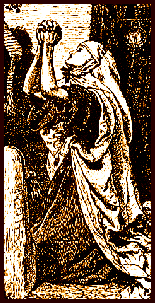
Care of the poor 1
Medieval poverty
The medieval poor
The earliest arrangements for the relief of the local poor or
paupers were provided by the parish, but there is a long history
of measures being taken to avoid this sort of responsibility.
From the earliest days of poor relief it has been the role of
the local owners of land and property, and their better-off tenants,
to make the  decisions over the ways in which
the local unfortunates should be treated. As these were among
the very people who had to provide the funds through the local
poor rate, it is hardly surprising that the main objective of
the overseers of the poor and other officials over the years
has been to do the absolute minimum, and at minimum cost, to
help the local poor in order to keep the poor rate as low as
possible.
decisions over the ways in which
the local unfortunates should be treated. As these were among
the very people who had to provide the funds through the local
poor rate, it is hardly surprising that the main objective of
the overseers of the poor and other officials over the years
has been to do the absolute minimum, and at minimum cost, to
help the local poor in order to keep the poor rate as low as
possible.
Harsh treatment of beggars
Although a share of medieval tithes was, in some areas, used
to help the local poor, beggars and vagrants who were judged
to be able to work were often treated very harshly and could
be whipped or even hanged. Labourers had to carry a testimonial
from the justices of the peace before being allowed to venture
outside their home parish to look for work. Those who were unable
to work had to carry a begging licence, but every effort was
made to force beggars to work, and those who refused were branded
with a letter "V" for vagrant.
There are 2 pages on the origins of care of the poor. Use the box links below to view the other pages.